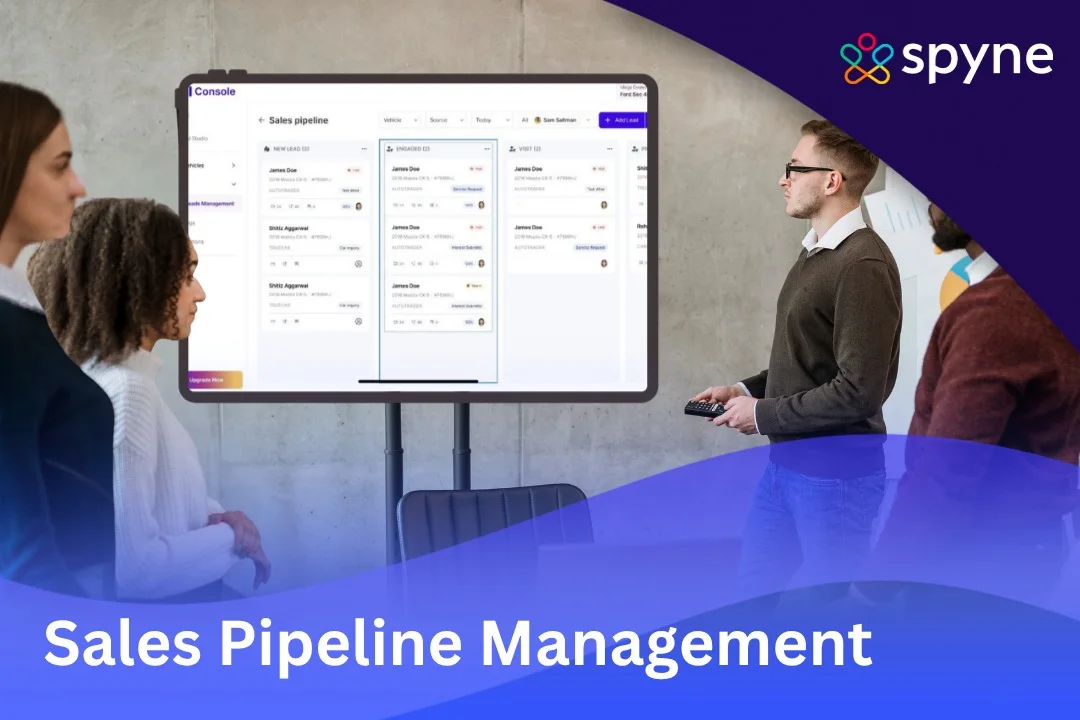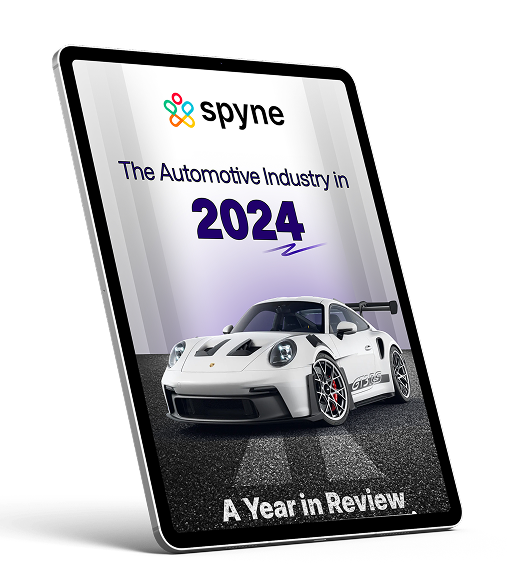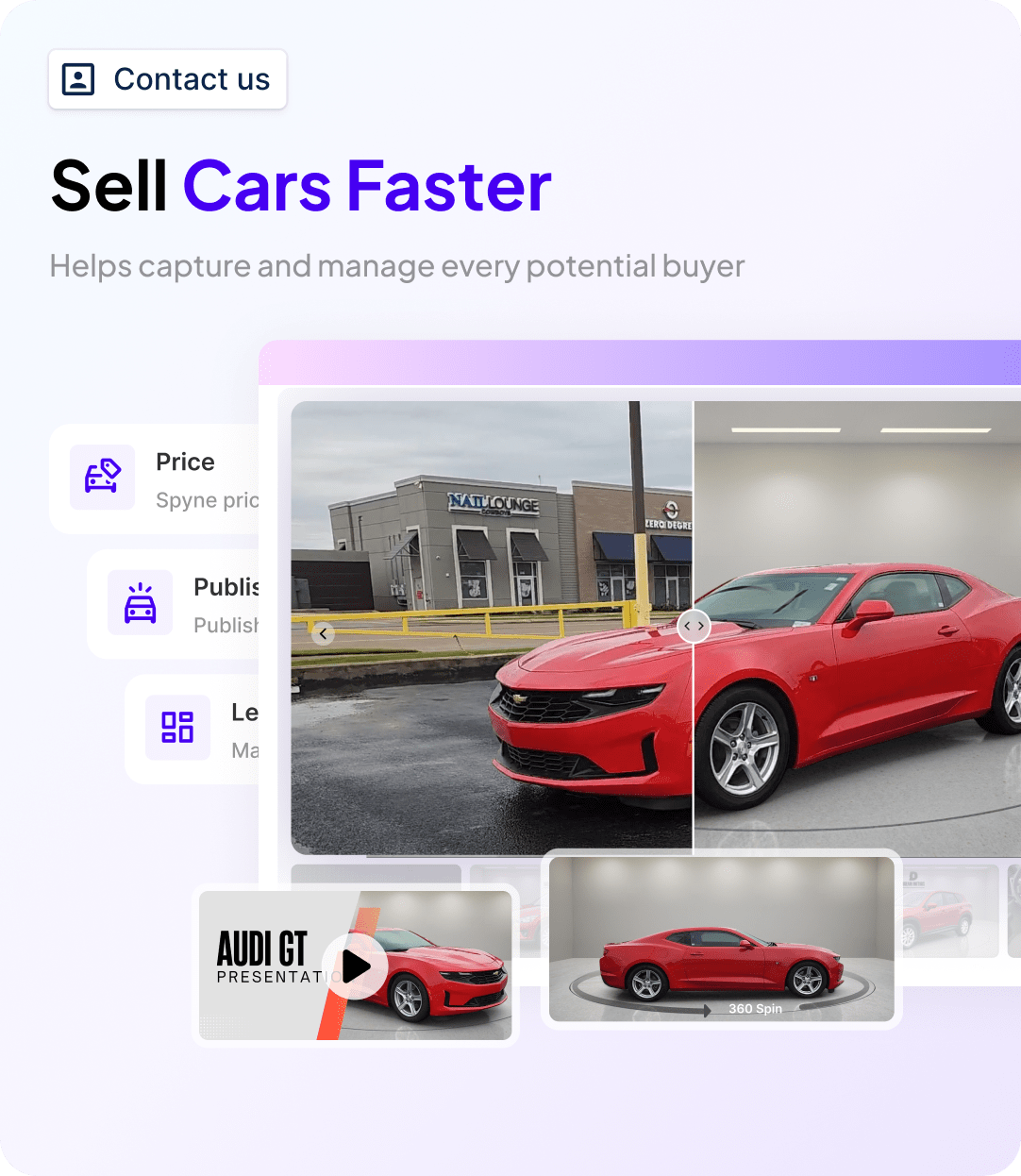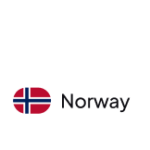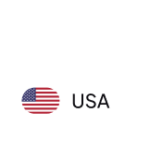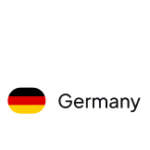A well-managed sales pipeline is the key to improving dealership performance. It enables the monitoring of leads, automates follow-ups, and prioritises buyers, resulting in quicker and wiser sales decisions. Business studies reveal that companies with defined pipelines have 18% higher revenue growth and 28% higher win rates. With complete visibility into each step, dealerships can minimize lead leakage and maximize conversions. In this blog, we’ll break down the importance of sales pipeline management and explore proven strategies to optimize every step of your dealership’s sales journey.
What Is Dealership Sales Pipeline Management?
The dealership sales pipeline management is a step-by-step guide that shows the current stage of the customer in the process from that initial dialogue to the point where they drive their car off the lot. Managing leads, tracking sales activities, and forecasting income becomes easier with the pipeline. An analogy for it can be thought of as a dashboard for your sales force to stay organized, so that no customer gets forgotten.
Why Is It Called a “Pipeline”?
Social science about marketing says the sales process flows through different stages, just like water flowing through a pipe. The sales process flows through different stages; a buyer never buys the car at first sight. The customer will initially hear about you, speak to your sales and pipeline management team, check out the car, maybe negotiate the price, and then buy. The pipeline is keeping track of all these steps so your sales team can proceed with what happens next.
Stages of Dealership Sales Pipeline Management
- Lead Generation – People find your dealership through ads or via websites, or by word of mouth.
- Lead Qualification – You investigate the seriousness of their intent and whether they can afford a car.
- Initial Contact – Perhaps a test drive, a phone call, or a visit.
- Vehicle Presentation – The salesperson shows the car, explains its features, and answers any questions.
- Negotiation – Price, trade-in, loan options.
- Closing the Sale – Finishing paperwork and handing keys over.
- Post-Sale Follow-Up – Maintaining contact, service reminders, or check-ins.
What Is Dealership Sales Pipeline Management?
Dealership sales pipeline management refers to the tracking and guiding of the prospective buyer through every step of the sales journey from initial contact to closing the sale. It keeps your sales force organized, enables them to follow up better, and sell more cars efficiently.
1. Define the Stages
An automotive Lead generation begins with people expressing interest in your car through ads, a phone call, or a walk-in. This is followed by lead qualification, during which your team checks if they are serious buyers. Prospects are nurtured with information, test drives, and vehicle options. Then, they negotiate price, trade-in, and finance. And finally, the last stage: closing the deal.
2. Monitoring and Tracking
Using automotive CRM software, sales management can map every customer interaction along the path. Mapping also allows you to see where each lead is currently situated and helps prevent losing potential sales. Regular review of the pipeline pursues the correction of weaknesses.
3. Importance
Good pipeline management leads to better sales forecasting, more deals closed, and better customer satisfaction. Also, it saves your team a lot of time to keep everything smooth and clear.
Importance of the Dealership Sales Pipeline Management
Your work in sales pipeline management provides a clear understanding of where each potential customer stands in the sales process, helping sales teams prioritize and focus their efforts on the most promising leads. Here are some of those reasons:
1. Sales Forecasting
With the tracking of car sales leads at each stage of the pipeline, you will be able to forecast future sales much more realistically. This will also allow setting practical goals, planning accordingly.
2. Improved Sales Efficiency
Because pipeline management can show us where a deal is stuck, we can remove that blockage and empower our team to concentrate on real business and close those deals faster.
3. Smarter Decisions with Data
With CRM, one gets important insights. The time a certain lead stays in an opportunity stage, or which sales rep performs better, all these help to improve the strategy and process as a whole.
4. Boosted Team Performance
There will be defined pipelines for the team to meet with; meanwhile, it can track and notice possible grounds for support or further training for reps.
5. Happier Customers
Understanding exactly where a customer is helps your team respond in time and provide better service, hence higher satisfaction and repeat business.
6. Better Use of Resources
Concentrating on warmer leads saves on time, effort, and money, thus making the entire sales operation much more capable.
Top 8 Cons of Not Monitoring Automotive Sales Pipeline Management
There are many ways poor sales pipeline management CRM can negatively impact your dealership. Here are some key areas affected:
1. Missed Opportunities
Your sales team might lose focus on the most viable leads in the absence of a clearly defined process. Buyers may thus opt for a competitor who pays them more attention, leading to a lost sale.
2. Reduced Productivity
Time spent with non-buying leads jeopardizes the motivation of the team and drains them of energy. Too much pressure is actually placed on the salespeople on occasion, and this demotivates them further to work.
3. Poor Customer Experience
Customers feel ignored when communication is slow or inconsistent. This breeds anger towards your company and damages the reputation of your dealership.
4. Hard to Forecast Sales
Without a good pipe CRM, it is difficult to predict how many cars will be sold and make appropriate budget plans.
5. Inaccurate Tracking
Without a well-functioning tracking system for leads, you would not know what holds the deals up and what methods work best for sales.
6. Lower Revenue
All these issues put together will bring down your sales and profits.
7. Lack of Accountability
A messy pipe CRM will fail to reveal who is responsible for what; hence, it is hard to manage the performance of your staff.
8. Inefficient Use of Resources
Without a clear picture, you might be throwing away money and energy on leads not worth a dime.
Dealership Sales Pipeline Management: A Step-by-Step Guide
To effectively handle dealership CRM sales pipeline management, you need to define clear sales stages, utilize a sales CRM pipeline system, prioritize leads, nurture prospects, and conduct regular pipeline reviews. Automation, clear communication, and identifying and addressing bottlenecks are also crucial.
1. Define Your Stages of Sales
Segmenting the sales process into distinct stages makes your team clear about where each lead is and how to advance them with ease.
- Some typical stages are lead qualification, contact, demonstration, negotiation, and closing.
- Each stage should come with definite requirements for advancement.
2. Utilize a CRM System
A CRM for automotive industry stores all customer information and sales activities in one place, so it’s much simpler to monitor leads, automate tasks, and enhance follow-ups.
- Stores customer data and interaction history.
- Automates reminders and follow-ups.
- Provides real-time pipeline visibility.
3. Prioritize Your Leads
Not all leads are equal. Prioritizing helps focus on the ones most likely to buy soon, increasing your chances of closing deals faster.
- Score leads based on interest and buying readiness.
- Focus on high-potential leads while nurturing others.
4. Nurture Your Prospects
Keeping prospects engaged with relevant, timely info builds trust and moves them closer to buying.
- Personalize by interests and stage.
- Use emails, calls, or social media for regular communication.
5. Have Regular Pipeline Reviews
Regular check-ins uncover where leads stall and enable strategies to be fine-tuned so that sales flow.
- Check conversion rates and sales rep performance.
- Pinpoint bottlenecks and optimize processes.
6. Automate Repetitive Tasks
Automation frees up time by performing drudgery such as follow-up emails and data entry, allowing reps to concentrate on selling.
- Schedule automatic follow-up reminders.
- Employ email templates.
- Automate lead updates.
7. Guidelines for Clear Communication
Uniform messaging at every phase assures your reps establish correct expectations and develop stronger customer relationships.
- Set tone and timing for communications.
- Train reps on messaging guidelines.
8. Find and Fix Bottlenecks
Sales pipeline CRM identifying where leads are getting stuck enables you to repair issues and move the sales process faster.
- Track slow phases.
- Gather team feedback.
- Enhance areas of deficiency.
9. Segment Your Pipeline
Pipelines separated by product or service type assist in customizing strategies and measuring performance more precisely.
- Organize new car, used car, or financing pipelines separately.
- Assign resources by segment, based on success.
10. Measure and Track Key Metrics
Sales pipeline tools monitor conversion rates and the length of the sales cycle assists you in measuring pipeline health and predicting sales.
- Establish goals based on data.
- Modify tactics as needed, based on performance.
11. Eliminate Dead Deals
Dead leads cluttering your pipeline divert effort and reduce focus on actual opportunities. It kills them.
- Remove or re-engage leads with no activity.
- Keep a clean, actionable pipeline.
Ways You Can Automate Your Dealership’s Sales Pipeline Management
Effective sales pipeline management software helps dealerships automate tasks, prioritize leads, and optimize processes. These strategies boost efficiency, improve follow-ups, and align teams to accelerate sales and drive revenue growth.
1. Don’t forget to follow up.
Effective leads progress through the buying cycle with timely follow-ups. Timely reminders increase the probability of message engagement while personalized messages enhance the likelihood of the purchase and decision-making activities being completed by the prospects.
2. Concentrate on the top-tier leads.
Analyze the behavioral and engagement data of the leads to identify the most valuable leads. This approach makes certain that your spend in terms of effort will pay dividends.
3. Remove dead leads.
The leads that are inactive or do not respond should be cleansed to concentrate more on the responsive prospects. Removing dead leads evokes an improvement in sales efficiency as the precious resources are not wasted and are focused on promising opportunities.
4. Keep an eye on the pipeline metrics.
Measure performance per milestone. These metrics offer insights into sales trends, identifying bottlenecks and providing guidance toward improving overall sales productivity and volume.
5. Check and adjust your pipeline processes.
Sales stages and workflows are not often updated to reap the maximum rewards. With continuous evaluation, dead weight can be trimmed leading to improved revenue growth.
6. Update your pipeline regularly
Keep your pipeline data fresh by consistently updating lead information and status changes. Accurate records improve team alignment, enable better forecasting, and ensure timely follow-ups, reducing the risk of missed opportunities.
7. Keep your sales cycle short
Aim to minimize the time between initial contact and closing a deal. Streamlined communication, clear qualification criteria, and prompt responses accelerate the sales process, enhancing customer satisfaction and increasing conversion rates.
8. Create a standardized sales process
Develop a repeatable, documented sales method tailored to your business and audience. Standardization improves efficiency, consistency, and onboarding, allowing your team to deliver a cohesive buying experience and easier performance tracking.
9. Give your prospects more content
Provide valuable, relevant content tailored to different stages of the buyer’s journey. Well-timed educational resources help build trust, answer questions, and address objections, guiding prospects toward making confident purchase decisions.
10. Use a CRM to manage your sales
An automotive CRM centralizes lead data, tracks interactions, and manages sales activities, creating transparency and accountability. It streamlines communication, improves collaboration, and provides data insights that empower smarter, faster decision-making.
11. Automate your sales pipeline
Automation pipeline management tools can handle repetitive tasks like follow-up emails, lead scoring, and reminders. This reduces manual errors, ensures consistency, accelerates lead nurturing, and frees sales reps to focus on high-value activities and relationship building.
12. Align sales and marketing teams
Ensure sales and automotive marketing collaborate closely to share insights, create targeted campaigns, and align messaging. This unified approach improves lead quality, enhances prospect engagement, and drives higher conversion rates throughout the pipeline.
13. Use data to forecast sales accurately
Leverage historical and real-time data to predict future sales performance. Accurate forecasting enables better resource planning, goal setting, and risk management, helping the team stay focused and motivated to meet targets.
Dealership Sales Pipeline Management: 11 Best Practices to Drive Optimal Conversions
Sales pipeline management software for the dealership isn’t merely monitoring leads, but creating a process that enhances sales velocity, improves close rates, and keeps your staff addressing the appropriate opportunities. The following are 11 practical best practices in order to maximize your dealership’s sales pipeline in 2025:
1. Monitor the Right Sales Metrics
Use CRM dashboards to track key pipeline metrics like lead volume, average deal size, time in pipeline, and win rate. Real-time visibility helps identify bottlenecks, measure team performance, and forecast sales accurately.
2. Standardize Your Sales Process
Define each sales stage from new lead to closed deal with clear criteria for progression. Standardizing steps like qualification, test drive, and financing helps streamline operations and improve lead conversion.
3. Closely Audit and Optimize the Pipeline
Inspect your pipeline every week to eliminate stale leads, improve follow-up approaches, and review conversion figures. AI sentiment analysis or deal scoring tools can be utilized to determine where deals are not moving and what can nudge them forward.
4. Update Deal Data
Stale lead information and forgotten notes are killers of productivity. Have each interaction, touchpoint, and follow-up logged in real-time in your CRM pipeline. This enhances handoffs and makes sure no lead slips through the cracks.
5. Research and Know Your Leads
Dig deeper than basic information to learn about a lead’s car shopping interests, financial situation, and search history. Tailoring the pitch with similar models or offers fosters trust and speeds up the journey to purchase, improving speed to lead and boosting conversions.
6. Qualify Leads Early
Utilize a strict qualification framework (such as BANT or MEDDPICC) to analyze budget, need, authority, and timeline. This ensures that high-value leads are prioritized and prevents wasting time on non-qualified prospects.
7. Follow Up with Precision
Automate follow-ups through SMS, email, and live chat, but make them personalized. Most automotive buyers require multiple touches before making a decision, so timing and relevance ensure their continued engagement.
8. Prioritize High-Intent Shoppers
Target leads who’ve asked for a test drive, inquired about financing, or come to your dealership more than once. These are signs of purchase intent. Engage them sooner with VIP treatment, price information, and quicker responses.
9. Unify Sales, Marketing & Service Teams
Sales must not operate in a vacuum. Make sure your marketing team exchanges campaign insights, and your service reps indicate upsell or cross-sell chances. A single CRM pipeline management enables all customer touchpoints to be aligned.
10. Provide Helpful Content Across the Pipeline
Utilize car comparison guides, explainer videos, loan calculators, and customer testimonials to assist leads in making choices. Providing the correct content at each stage keeps buyers updated and creates dealership credibility.
11. Take Advantage of CRM & Automation Tools
Today’s CRMs assist auto dealers with assigning leads, automating processes, and seeing pipeline health at a glance. Integrated sales pipeline software with Spyne’s Auto CRM or Connect AI allows real-time lead follow-up, automotive inventory management integration, and end-to-end visibility to close more deals quicker.
How can Spyne help with dealership sales pipeline management?
Spyne Retail.AI provides a complete set of AI-driven sales pipeline management tools that help streamline and optimize your dealership’s sales pipeline management from lead capture through post-sale follow-up. Whether you are dealing with new car sales, used vehicle leads, or B2B buyers, Spyne enables you to move quicker, work more intelligently, and close more deals.
Here’s how Spyne assists every stage of the pipeline:
1. Lead Capture & Qualification
Spyne’s Connect AI enables you to catch leads from various sources, your site, landing pages, or third-party marketplaces, and qualify them in real-time with conversational AI.
- Automatically respond to queries through a chatbot or live chat
- No pre-set questions to segment high-quality leads
- Directly forward hot leads to your sales and pipeline management team
2. Speedier Follow-ups & Engagement
With follow-ups powered by AI, Spyne ensures all leads are reached at the perfect time via email, SMS, or chat, all automated and monitored.
- Configure lead-nurturing campaigns
- Send reminders for test drives, callbacks, and offers
- Avoid cold leads with scheduled check-ins
3. Visual Content That Converts
With Studio AI, you can immediately make vehicle images better with professional, dealership-quality backgrounds and angles. Improved visuals equate to increased engagement and higher-quality leads.
- 40 %+ boost in click-throughs
- Up to 2x more leads generated from listings with high-quality images
4. Deal Tracking & Insights
Spyne’s automotive CRM features enable your team to monitor the progress of every deal through the pipeline. You can sort, view, and filter by stage, lead status, or priority.
- Find bottlenecks (e.g., leads hung up in negotiation)
- Track team performance
- Forecast sales with live data
5. Automation & Pipeline Clean-Up
Spyne automates mundane tasks such as status updates, follow-ups, and lead clean-up. This pipe CRM ensures your pipeline is clean and geared towards active deals.
- Auto-remove dead leads after X days of inactivity
- Tag and group leads for quicker decision-making
- Never lose a follow-up or opportunity
6. Customer Retention & Repeat Sales
After sales, Spyne reminds you to stay in contact with customers through automated service reminders, review requests, and re-engagement campaigns.
- Enhance customer loyalty and lifetime value.
- Enhance referrals with intelligent post-sale nurturing
- Earn repeat sales through targeted promotions
Conclusion
Managing your dealership’s salesforce pipeline management doesn’t have to be complicated. With the right system in place, you can track every lead, follow up on time, and close more deals without the chaos. Spyne’s AI-powered solutions are built to simplify sales pipeline management for used car dealerships, helping you capture more leads, reduce response times, and increase conversions.
From real-time lead tracking to automated follow-ups and performance insights, Spyne gives your team the tools they need to stay on top of every opportunity. It’s not just about managing leads, it’s about selling smarter. Ready to boost your dealership’s sales performance? Book a free demo with Spyne today and see the difference.

